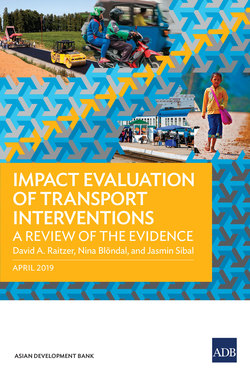Читать книгу Impact Evaluation of Transport Interventions - David A. Raitzer - Страница 8
2. Types of Transport Sector Interventions
ОглавлениеGlobally, the transport sector has been one of the largest areas of public investment. In the People’s Republic of China (PRC), for example, annual investment in transportation infrastructure is over 10% of total public expenditure (ADB 2017b). Within official development assistance, transport takes a leading share of project expenditures.
The focus on transport within the projects of the Asian Development Bank (ADB) typifies these patterns in many ways. Transport has been one of ADB’s main sectors over the last 5 decades, with transport operations reaching over 20% of total ADB investment in 2017. Although the largest share of ADB transport sector spending remains on roads, other areas are growing more rapidly (Box 1). By 2020, ADB’s lending for public transport, railways, and other transport subsectors
Box 1: ADB Transport Sector Lending
Transport is one of ADB’s major sectors, and it accounted for 21% of 2017 investment. At the same time, the nature of transport investment is changing. Urban transport and investment in improved transportation policies are growing from small shares of the portfolio to reach large shares of investment.
Sources: ADB (2010); Authors’ calculations from ADB data.
(ADB 2010) is expected to overtake ADB’s lending for roads. A relatively recent feature is the emergence of transport policies as an investment focus, which goes beyond the traditional emphasis on hard infrastructure.
Transport development is often considered as an integral part of other development processes (ADB 2017b). For example, transport is increasingly recognized as a driver of the development of economic corridors, regional economic integration, and trade. Logistics management to this end is becoming a focus for transport. Sustainable transport is considered as key to reducing pollution problems and greenhouse gas emissions by alleviating congestion and making transport more efficient. Road safety campaigns are spreading as means of ensuring health benefits and reducing externalities. Gender equity is a growing emphasis in transport operations through attention to safety, security, and appropriate physical designs (ADB 2013b). More attention is also being given to integrating transport with other types of complementary interventions, such as those targeting public services, livelihood improvement, or business development. In addition, dedicated efforts are being made to improve transport policies by promoting nonmotorized transport, mainstreaming climate change considerations, reforming pricing, and harmonizing national procedures with international conventions and standards.
This means that investment in transport is increasingly oriented toward innovation and behavior change. A core element of sustainable transport initiatives is the “avoid–shift–improve” approach, which is intended to reduce the growth of congestion through altered transport behavior, including reduced motorized trips, shifts to more efficient public transit, and more efficient vehicle use (ADB 2010). Transport demand management, pricing, driving control policies, and intelligent traffic systems are key elements in improving transport efficiency and implementing these changes. Impact evaluation can play a key role in testing how such behavior change may be achieved and whether innovations work as intended. In addition, intelligent transport systems can also provide more data to enable new impact evaluation possibilities.
